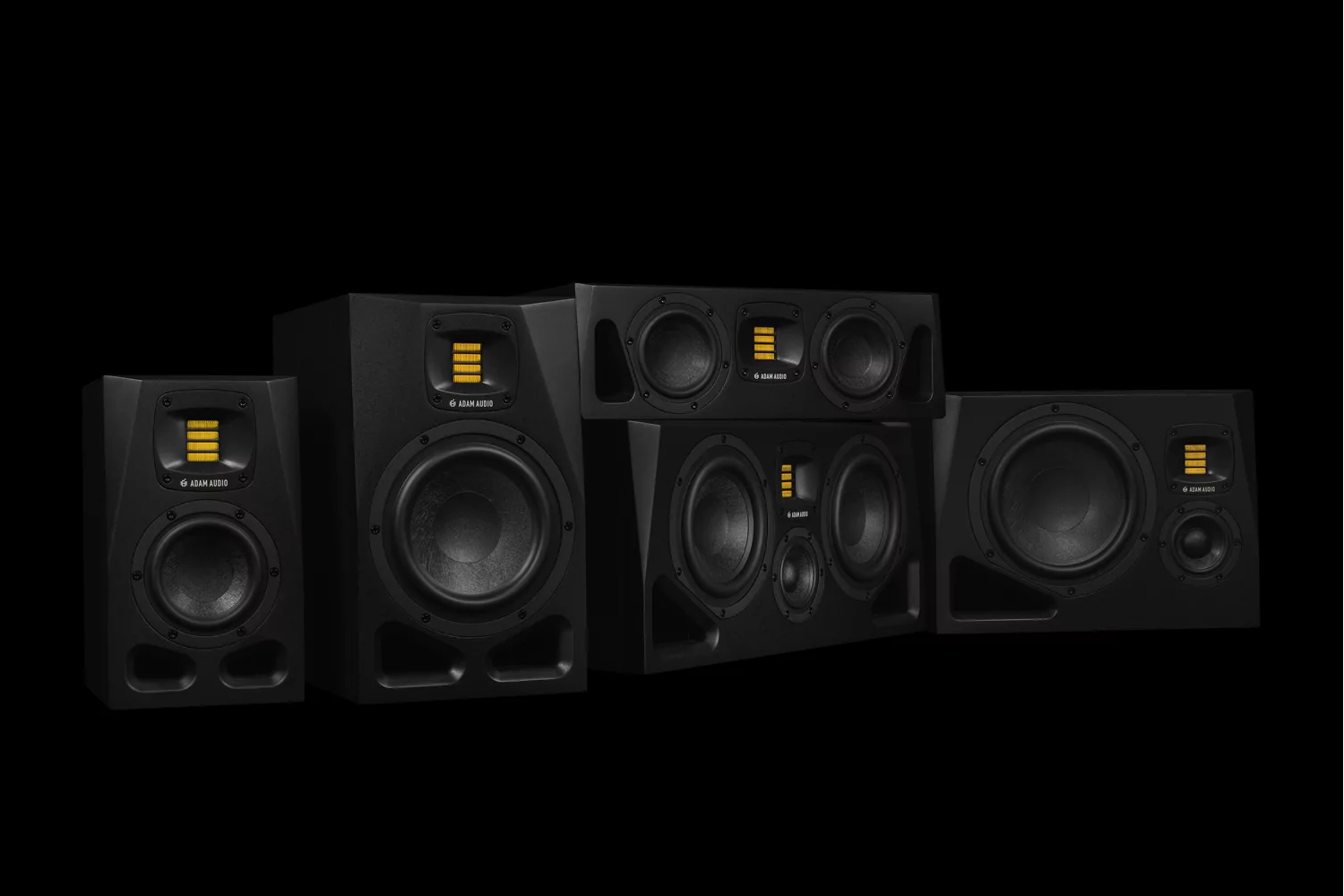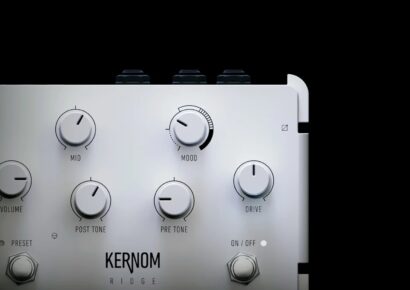A chat with Cris Stevens and Ben Willis of ADAM's UK parent company Focusrite Group, who brought the A series to Australia in late 2022.
A mixture of razor-sharp German engineering, state of the art monitoring and loudspeaker technologies, and the continual thirst of a start-up to leap to the next production level. That’s how ADAM Audio products – particularly the A7X and S3 – became standards in global recording spaces since launching in March 1999 in Berlin, Germany. Advanced Dynamic Audio Monitors began with the eXtended Accelerating Ribbon Technology (X-ART) tweeter, based on the Air Motional Transformer by Oskar Heil in the 1960s. There are three ranges – the entry point T Series, the premium studio monitor S Series, designed to deliver more volume in larger rooms, and the ADAM Audio A Series, the mid-price range with many S features.
Read up on all the latest features and columns here.
“The A series delivers highly accurate, transparent sound across a full line of monitors that can be controlled remotely and in real time,” the company says. There are five models – the A4V, A7V, A44H, A77H and A8H are the right fit for an array of professional and home studios — as well as broadcast, fixed-installation, 3D, immersive, and home audio environments. Innovations such as rotatable HPS waveguide technology, and DSP-based room correction and voicings enable users to tune speakers for their room and ears.
The compact but powerful A4V is best suited to smaller studio environments.The A7V continues the success story of the A7X. Breaking new ground in its price range, the A44H offers a low-profile alternative to the A7V.
With a 19-inch width, the horizontally oriented A44H can sit in a standard rack shelf or be mounted above or below a screen. A successor to the A77X, the three-way A77H showcases ADAM Audio’s latest technology.
The pinnacle of the A Series, the A8H, is also a three-way design with a different form-factor that delivers accurate and analytical sound required for critical-listening environments. The A Series uses the transformative power of DSP-based electronics to provide better tuning precision than analogue-only speakers. ADAM Audio’s UK parent company Focusrite Group brought the A series to Australia in late 2022, and Regional Sales Manager Cris Stevens and Marketing Manager Ben Willis have been introducing it to the local market with various initiatives.
Stevens is holding demonstrations in studios, first in Brisbane (Little Street Studio) and Sydney (Kiln Studio), with plans for similar events in other major cities. The Sydney event ran over two days using two rooms for each hour, and with ten sold-out sessions. “Speakers are such a personal thing,” he states. “There’s no right or wrong in any of this. It’s finding something that inspires you or connects you. Music at that level needs to touch you on an emotional level. The speaker is the thing that brings that to you to it…or not as the case might be. It’s getting people together in front of the speakers and let the speakers speak for themselves.”
Stevens has been working with ADAM Audio gear for 14 years, long before it came under the Focusrite banner.
He’d started as a freelance mixer and engineer in the UK “in some nice rooms with some fantastic engineers and producers” before becoming an in-house mixer for indie labels in the drum and bass scene. He moved to Australia in 2002 and set up Federal Audio, which was distributor for ADAM Audio for 12 years. Willis was a musician, playing synthesisers in bands around the world, as well as photography and video.
Part of his Focusrite marketing role includes filing profiles of Australian musicians who use its gear on its international social media platform.
Mixdown: Why do you think ADAM Audio products work so well in the studio environment?
Cris Stevens: “We have a complete range, from an entry level offering, mid-price offering and premium offering.
They all work in home studios, broadcasting, 3D immersive and home audio environments.It’s a range of speakers which are flexible for whatever work demands of them. Obviously the German design is renowned for the tweeter, the ribbon tweeter being an iconic part of the ADAM stable since the get-go.
“It delivers a clarity and openness which is unmatched by others at that price point.”
Ben Willis: “They’ve got such a long-standing legacy and are an industry standard.
“The ribbon tweeters particularly have a really crisp high end and a lovely sound stage, they’re nice to mix with.
“The biggest drawcard for me is how well they translate when you’re doing a mix on them, into other environments whether they be earbuds or anything else.”
Mixdown: I attribute its success to its team of great engineers.
Cris Stevens: “Yes, they have a deep bed of German engineering, a legacy of designing speakers for some years now. They’re continually building on the success of each previous range before, they’re not sitting on their laurels. The A series is testament to that, it’s a big step up from the AX. People can trust in the engineering.”
Mixdown: What’s been the reaction from the Australian industry to the A series?
Ben Willis: “It’s been really well received, in particular the A4, there have been a lots of comments about their relative weight. There’s a lot of interest in the 88H too. There wasn’t a dedicated three-way speaker on the AX series.”
Mixdown: How loud do you listen when you compose, record, mix or master your music?
Cris Stevens: “The new standard is most people work at 85 dbs. There are obviously health and safety issues with loud volume over a period of time. We’re engineers and we have to look after our ears. Pushing 100 db for eight hours isn’t sustainable for a working professional. So 85 is the norm although I might jump up at times to be louder than that but that might only be for a couple of minutes.”
Mixdown: Do you always work at the same volume or just turn up your monitors until you hit a comfortable level?
Cris Stevens: “I try to make the mix loud enough through the moves I’m making – the EQ moves, the balances, the faders.I tend to leave my monitor stuck at a constant level for most of it. Like I said, when I get towards the end I might turn it up.”
For more information, head to Adam Audio. For local enquiries, visit Focusrite.







